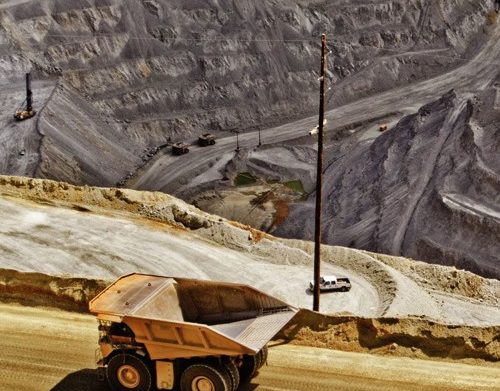BK: Welcome to HxGN RADIO. My name is Brian. Thanks for joining us today. Hexagon Mining’s current suite of integrated solutions are cutting-edge digital technologies that transform how mines explore, mine, process and deliver product to their customers. Our engineers and developers are constantly innovating and striving to keep mines at the forefront of the digital revolution in mining. We will learn today where our development of solutions is heading at Hexagon Mining.
With me is Leonardo Fernandes, director of product management at Hexagon Mining. In today’s episode, we’ll be exploring Hexagon Mining’s technology roadmap. Leo, welcome. Thanks for joining us.
LF: Thank you very much.
BK: How are you today?
LF: I’m great. I’m great, thank you.
BK: Good. Let’s start by telling us a little bit about Hexagon Mining.
LF: Hexagon Mining currently provides best-in-class solutions for the mining [industry]in terms of planning, operations and safety, all in our integrated solutions. We provide all the best-in-class solutions for the mining industry. We develop all those suites and head digitalisation in the mining industry. This is pretty much our goal for the next few years.
BK: Excellent. Love it. Tell me a little bit about the array of technology within the existing platforms.
LF: Currently, we have three main verticals. One is planning, where we provide the solutions the engineer who does all the planning for the mine. In addition, we have an operations suite that’s related to fleet management assistance, providing solutions that manage the operators. We also have a suite of safety solutions that includes collision avoidance and fatigue monitoring. Vehicle Intervention System is our product that we are releasing this week.
BK: Love it. Excellent. Let’s go into challenging things here because I know that’s always fun. What are the most challenging issues you’re facing right now?
LF: I can say the challenges in the mining industry in general, we are coming from a downturn in the mining industry, so there is pressure to reduce operational cost, and that is impossible without the technology. Our main goal is to provide those technologies to the industry to reduce their cost and reduce their risk regarding day-by-day activities in mining.
BK: It’s a very exciting thing. I’m glad. It’s good to make sure that those things are taken care of, of course. It’s very important, but I like the reducing of costs. It makes a lot of sense. When you get into the integration of mines and stuff like that, how important is integration with mines?
LF: It is a good point. Mining in general, all the mining industry currently has a lot of point solutions, department solutions. If you go to the engineers, they are using a specific solution. If you got to the operators, they are using another solution. Many times, they are totally disconnected with the business. Sometimes they resolve their own problems, but they forget to look at the chain. That’s our main goal, to provide all the solutions. We can provide all the solutions for all departments to deliver one thing that not only solves a specific issue for a department, but resolves the issue for the mining processing overall. That’s the main goal for our technologies.
BK: Excellent. All right, so I’m going to jump back a little bit just for fun. We talked about how you are the director of product management, so tell me a little bit more about your role.
LF: Our team is really looking forward to our roadmap that provides the next step for the industry. We are always looking for new technologies and new processes that we can apply in the industry. I have [worked with]guys who are really focused on delivering what we can do the best for the industry. We have really close contact with the customers. Our main role, to be honest, is just to listen and understand their problems, and try to provide the best solution for each one.
BK: Good, love it. Taking care of people’s problems, that’s always a fun thing. That’s good. I’m glad. It’s obviously essential for what you’re doing. Tell us a little bit about MiPlan, the acquisition and how that’s fitting into the roadmap as well.
LF: MiPlan was a key acquisition for us because for many years, we used to develop solutions focused on the desktop. We used to have desktop solutions, as well as operator solutions. Now the world’s going mobile. The MiPlan acquisition is exactly that. We acquired MiPlan because we want to introduce more mobile solutions for our customers. We have, right now, a huge roadmap that we will offer pretty soon, a bunch of mobile solutions for customers that are integrated, again, with the solutions that we currently have in our portfolio.
BK: So, mobile—talk about the benefit of going mobile in general.
LF: The world’s going mobile.
BK: Of course it is, yeah.
LF: Currently everyone has a mobile phone. Let’s do an example. If you look at the operator, the operator is in his truck and he’s doing his thing. Sometimes all the information that’s with the operator needs to be looked at by the mining manager. The mining manager sometimes is travelling or doing something. With his phone, he can interact directly with operations, look at production, do actions as well and things that are happening in real time with the operators. This is totally outside of the mine.
In the same way, not just the mining manager, but the supervisor, everyone, can have the actions much faster instead of being in offices or really be there to do the actions needed to meet the mining goals.
BK: There’s always that cost/benefit question, so that’s great. Thanks for the example. I love that. What is digital transformation in terms of mining?
LF: It’s a really good question. Sometimes this looks like a kind of buzzword. Everyone says, “This is the transformation of the mine.” I used to say to the customers, “Digital transformation – if you ask too many people, everyone will say different stuff about the digital transformation of mining.” The point is, the mine, as I said, is coming back from a downturn. Because of that, mines are looking to reduce their costs. It’s impossible to do this without technology. Mines are investing a lot in technology, but the key question is what to do first. Hexagon Mining is heading that, and we are showing our customers what they need to do. The idea about digital transformation is exactly true. Look at their current solutions, look at the technologies that can be applied and what gives real value to the closed-loop the process to deliver the best process possible.
BK: Okay, can you give an example of one of the ways that’s happening right now or even one of the customers?
LF: A really good example is the integration of planning and operations. Most of the mines today, they are totally disconnected. Sometimes they are operating, but not following the plan that was done. Sometimes it is tough to hit production targets. The planning people, the engineers, don’t get feedback in real time to tell them what is happening in the operation. That’s an example of how we can integrate the planning people and operations people, and we can help them take action much faster. If there’s some production target that’s not [valid]or, for example, if equipment needs maintenance, the planning solution can redo the things needed to hit the targets. This is an example of how we can integrate departments, and it is that kind of digitalization [we offer].
BK: You talked about integration, communication and all that between the departments and stuff. Communication breakdown, you’re saying, has been happening. What kind of situations have you seen when the communication breaks down with mines?
LF: It’s a really good question, by the way. Many mines are pretty much paper based. I gave an example about mobile applications, but in terms of maturity level, many mines are at a basic level. They’re using paper. They cannot imagine how to do all the tracking of paperwork, all the things they are putting on paper. It’s pretty hard. I really think that we are applying, with our new acquisitions, to improve the communication, and that way we can have mining pretty much paperless where they can use the mobile applications and have all the information in digital and send reports we can have them on a list to identify major gaps and solutions.
BK: Excellent. Very exciting and very helpful, so that’s wonderful. Leo, thank you so much. Appreciate your time.
LF: Thank you very much.
BK: Absolutely. Thank you for being here on HxGN Radio. You can learn more about Hexagon Mining on HexagonMining.com and be sure to tune in to more episodes on hxgnradio.com, iTunes, SoundCloud, and Stitcher Radio, and thank you so much for listening. Enjoy your day.

















